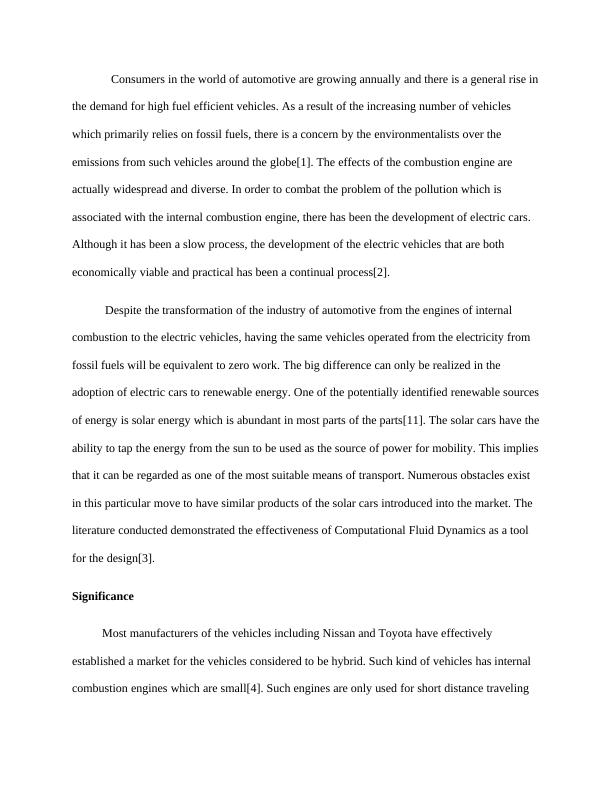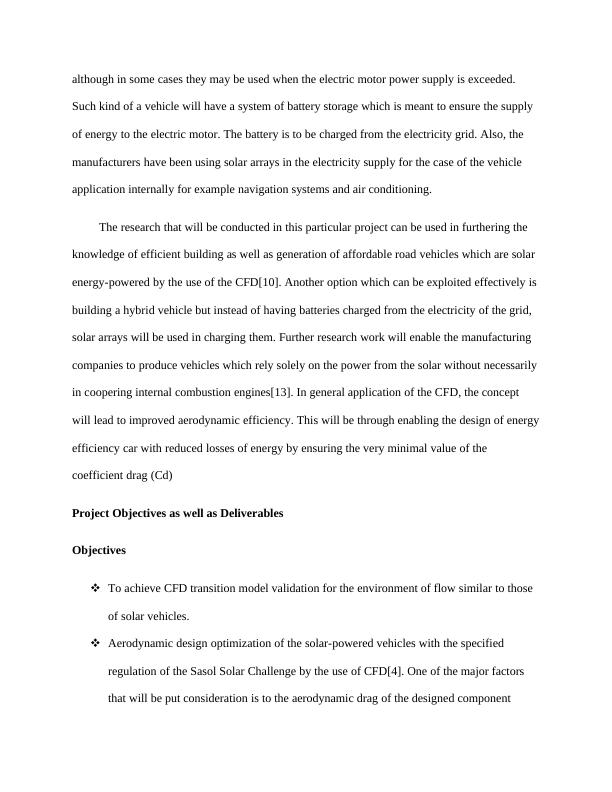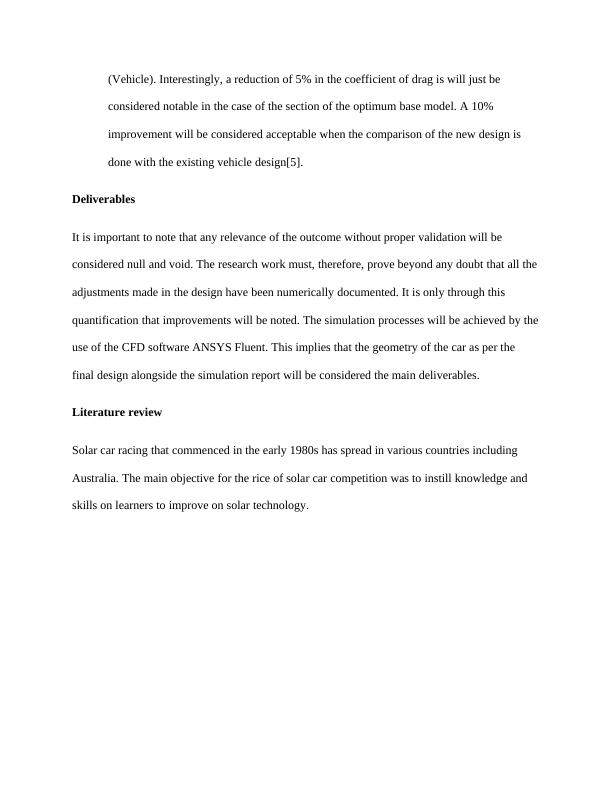Aerodynamic Design Optimization of Solar-Powered Vehicles using CFD
This assignment is a literature review on the significance of aerodynamics in solar cars and the methodologies used for automotive aerodynamic investigation.
11 Pages2078 Words92 Views
Added on 2022-12-30
About This Document
This article discusses the aerodynamic design optimization of solar-powered vehicles using Computational Fluid Dynamics (CFD). It explores the significance of solar energy in the automotive industry and the potential of solar cars. The objectives and deliverables of the project are also outlined. The article provides a literature review on solar car racing and the aerodynamic drag of vehicles. It concludes with a discussion on automatic aerodynamic investigation methodologies using CFD.
Aerodynamic Design Optimization of Solar-Powered Vehicles using CFD
This assignment is a literature review on the significance of aerodynamics in solar cars and the methodologies used for automotive aerodynamic investigation.
Added on 2022-12-30
ShareRelated Documents
End of preview
Want to access all the pages? Upload your documents or become a member.
Electric Car: An Alternative Fuel Automobile
|10
|650
|96
Practical Application of Renewable Energy Technology
|15
|3214
|58
Advance Development of PHEVs by Electromagnetic Brakes 2
|9
|2872
|172
Challenges in Improving Reliability of Hybrid Cars: Cost Efficiency and Environmental Friendliness
|10
|3560
|74
The Future of Electric Vehicles in Australia
|22
|6162
|319
Sustainability of Conventional Cars
|8
|1708
|453




